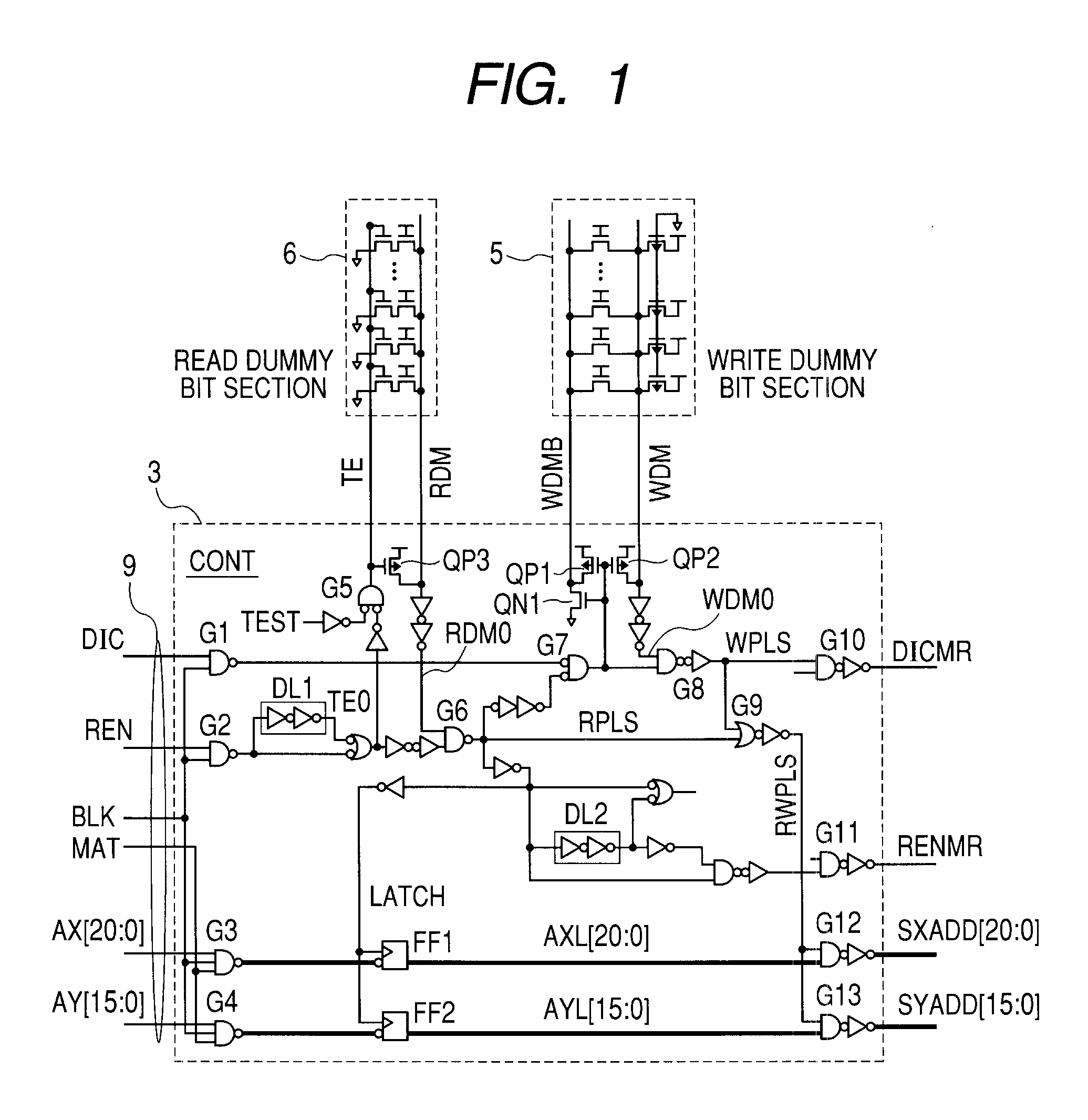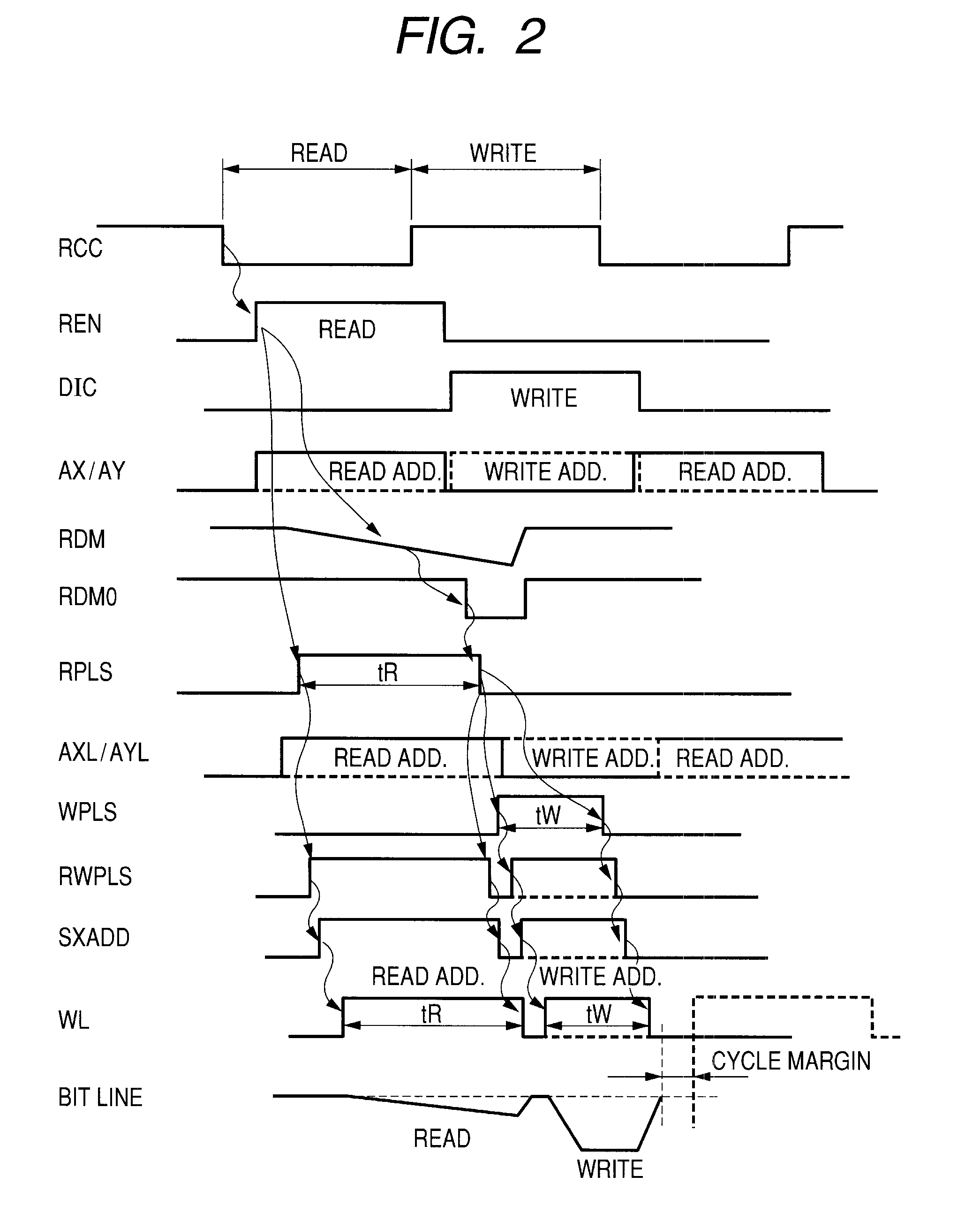Semiconductor memory device
a memory device and semiconductor technology, applied in the field of semiconductor memory devices, can solve the problems of large variation in memory cell characteristics in one memory chip, inability to implement timing adjustment, and inability to detect output signals and improve the consistency between the operation of reading and writing memory cells,
- Summary
- Abstract
- Description
- Claims
- Application Information
AI Technical Summary
Benefits of technology
Problems solved by technology
Method used
Image
Examples
Embodiment Construction
[0035]FIG. 3 shows a whole block diagram of an embodiment of an SRAM according to this invention. In FIG. 3, a layout of blocks is shown corresponding to their actual geometrical arrangement on a semiconductor chip. The semiconductor chip is divided into four areas, as indicated by dotted lines in the figure, the division being made by an address input circuit region extending lengthwise in the horizontal center and an indirect logic region extending crosswise in the vertical center. Although not restrictive, these four areas each have identical memory arrays and address / data logic regions. One area is divided into two arrays (9M arrays) in right and left positions. One array has a storage capacity of about 9 Mbits and, therefore, the whole chip has a storage capacity of 72 Mbits (9 Mbits×8).
[0036]FIG. 4 shows a detailed block diagram of one array from FIG. 3. One array (9M array) is divided into nine modules (1M modules) arranged in a lengthwise direction of FIG. 4 (also true for F...
PUM
 Login to View More
Login to View More Abstract
Description
Claims
Application Information
 Login to View More
Login to View More - R&D
- Intellectual Property
- Life Sciences
- Materials
- Tech Scout
- Unparalleled Data Quality
- Higher Quality Content
- 60% Fewer Hallucinations
Browse by: Latest US Patents, China's latest patents, Technical Efficacy Thesaurus, Application Domain, Technology Topic, Popular Technical Reports.
© 2025 PatSnap. All rights reserved.Legal|Privacy policy|Modern Slavery Act Transparency Statement|Sitemap|About US| Contact US: help@patsnap.com



